The Quiet Echo
The escalators still run, slow, steady, humming beneath mostly empty lights. Their steps cycle through silence now, gliding past shuttered storefronts and aging banners that haven't been changed in years.
No crowd presses forward, no music spills from overhead speakers. There's only movement, faint and mechanical, like a heartbeat in an empty chest.
Gwinnett Place Mall opened in 1984, anchored in Duluth's Pleasant Hill corridor when Gwinnett County was riding high on suburban growth. Suddenly, you had this ecosystem where families actually wanted to spend their Saturday afternoons.
Kids roamed in packs, teenagers claimed their territory near the Orange Julius, and mall traffic created that particular buzz you could feel the moment you stepped out of your car.
These days, even in its half-lit quiet, the space tugs at something deeper.
Lights blink above rows of locked security gates, casting those familiar alternating stripes across worn tile floors that probably seemed so modern in '84.
Anyone searching for things to do in Duluth, GA, might still stumble across it, not because there's much to do here anymore, but because it's still standing, still breathing somehow, with most of its story already written.
Groundbreaking Retail - The Launch Years of Gwinnett Place
They cleared the red Georgia soil on January 21, 1982, carving out the foundation for a regional mall that was built to dominate.
Gwinnett County was in the middle of a suburban push, and the developers knew exactly where to drop the anchor.
Rich's, Davison's, and Sears locked in early, each one a department store giant with decades of muscle behind them.
When Gwinnett Place Mall opened its doors on February 1, 1984, it wasn't cautious or half-formed; it was fully grown.
Two stories, flanked by national chains and smaller shops, spaced wide enough to feel generous without going cold.
Everything inside had weight: terrazzo flooring, solid banisters, storefront signs lit in familiar fonts.
People came to browse, to buy, to walk laps after dinner. The mall was less a destination and more a loop stitched into the habits of the area.
Mervyn's opened in 1986, deepening the draw, and Davison's flipped its branding to Macy's around the same time.
By 1993, Parisian arrived with enough momentum to justify a whole new wing. The layout clicked into place, and for a while, nothing felt missing.
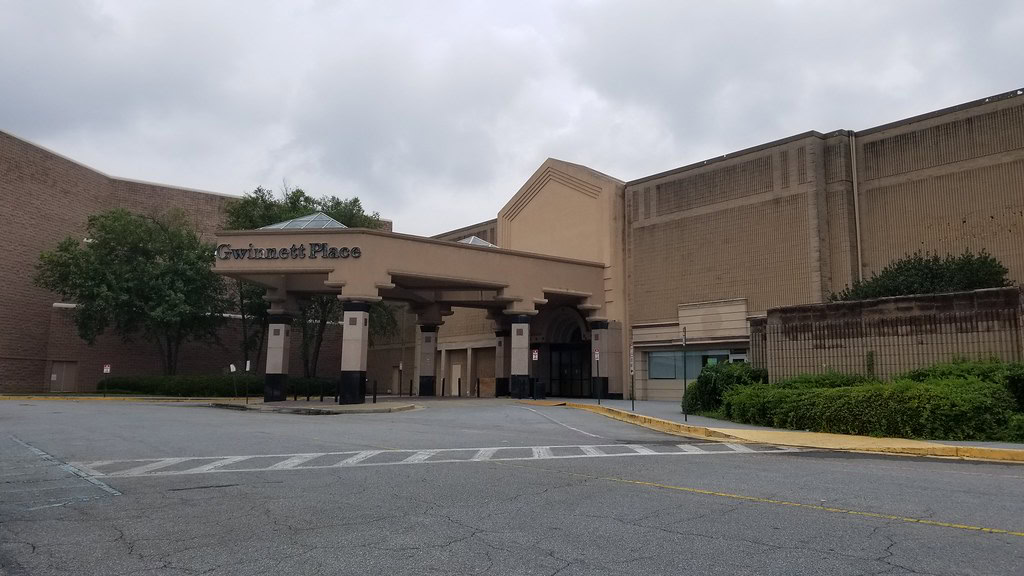
Losing Ground - Market Shifts and Tenant Fallout
By the late 1990s, the cracks weren't loud, but they were steady. In 1999, the Mall of Georgia opened in Buford.
Two years later, Sugarloaf Mills entered the scene. Both had newer footprints, better highway visibility, and the momentum of early-2000s retail optimism.
Gwinnett Place stayed upright, but the current had turned.
The Gwinnett Place Cinemas, sitting just outside the main structure, closed in September 2000. General Cinema was already in financial trouble by then, and a bankruptcy filing came the following month.
That closure marked more than a lost screen; it marked the first piece of the complex to go dark and stay that way.
By 2003, Macy's and Rich's merged into Rich's-Macy's, and for two years, the mall operated with a duplicate anchor.
When the former Davison's location shut down in 2005, Mega Mart moved in five years later. But the in-between years dragged on. Parisian flipped to Belk in 2007.
Belk shuttered in 2013. JCPenney, which had replaced Mervyn's in 1997, closed on April 4, 2015.
By that point, the mall had begun to feel off-center. One wing still drew traffic. Others barely held the lease signs upright. The commercial grid that once kept everything humming had thinned to a trickle.
Security Cracks and Ownership Collapse
In 2013, Gwinnett Place Mall slipped into foreclosure. Simon Property Group let it go. Moonbeam Capital Investments picked it up, but the move didn't bring repairs or revival.
The mall's bones stayed mostly untouched, even as tenants peeled off. What remained felt hollow.
Then came the headlines. On December 21, 2017, a maintenance worker found the body of a 19-year-old woman in the back room of the food court inside an abandoned Subway unit.
She had been there for weeks. In January 2018, two workers were assaulted and robbed near the Macy's parking lot. Two months later, a woman was arrested in the Sears lot on multiple drug and public conduct charges.
The pattern kept real estate interest at bay. There was no clear plan for intervention, and the parking lots around shuttered anchors turned into dead space.
Meanwhile, parts of the building were still occupied. Beauty Master bought the former JCPenney space in March 2016 and opened in August.
But isolated success didn't lift the whole property.
Without a unified owner or coherent lease strategy, the mall became a patchwork. It stood, but there was no one steering what came next.
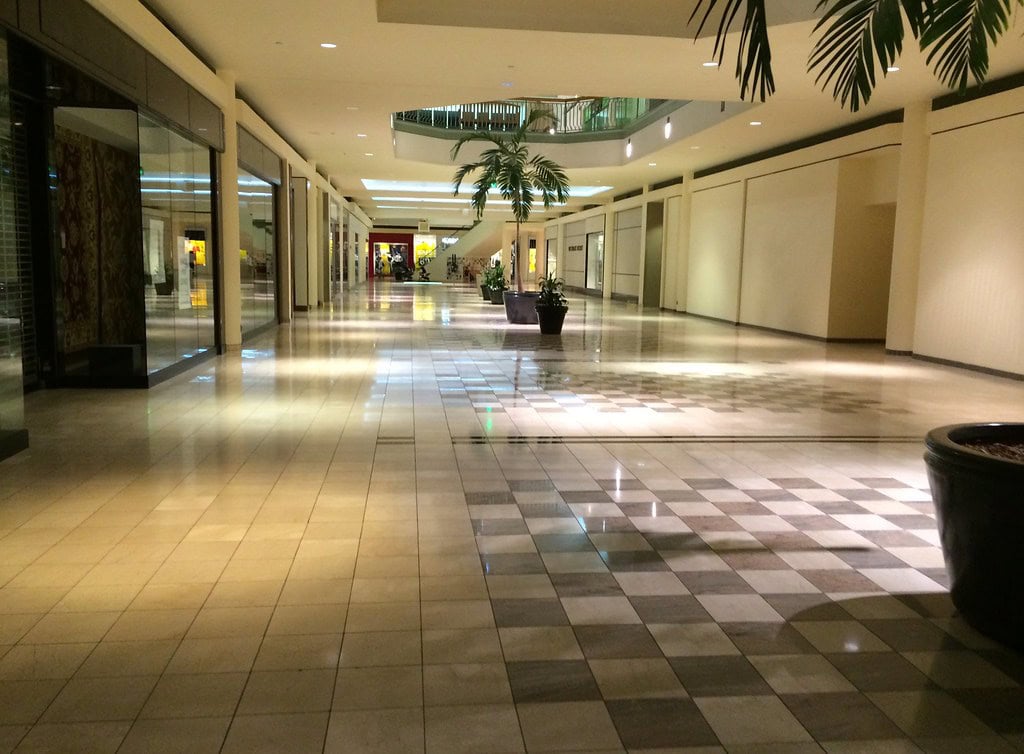
Screen Time - Leasing the Mall to Hollywood
In May 2018, part of Gwinnett Place Mall was cosmetically restored to look alive again. Crews patched up storefronts, retrofitted signage, and brought in racks, props, and neon straight out of the 1980s. It wasn't for shoppers. It was for cameras.
Netflix had picked the mall as the set for Starcourt, the centerpiece of Stranger Things Season 3.
Production teams filmed on-site throughout that summer, turning empty units into Scoops Ahoy, Sam Goody, and The Gap. Everything looked open, lit, and stocked, but none of it was real inventory.
Foot traffic came from cast and crew, not customers.
By 2019, once filming wrapped, the fake stores came down. The set walls were stripped. Props were removed.
Mall management had the remaining pieces dismantled after noticing people trying to enter the building to snap photos or take pieces of the set.
The mall got a wave of public interest during the release window, but that never translated into new leases or buyer activity.
Outside of that short window, the retail vacancy rate didn't move. The parking lots stayed sparse, and nothing inside stayed open unless it already had a reason to be.
Government Buyout - Real Estate Acquisition Strategy
On December 15, 2020, Gwinnett County's Urban Redevelopment Agency announced plans to purchase the central 39-acre property from Moonbeam Capital Investments for $23 million.
The deal closed in April 2021. It gave the county control of most of the main mall footprint but not all of it.
That's because pieces of the mall had already splintered off. Mega Mart owned its space. So did Beauty Master. The outparcel Macy's and its furniture store remained separate.
So, even with the sale complete, the property functioned more like a cluster of holdings than a unified asset.
The county didn't publicize a final redevelopment plan at the time. Instead, they signaled long-term intentions. That left observers to parse the zoning maps and wait.
The mall's physical condition continued to decline in parts, but some portions remained operational due to separate private ownership.
The transaction marked a shift from private speculation to public control, but without clear, immediate changes. The lights still came on in Mega Mart and Beauty Master.
But around them, large chunks of retail square footage stayed locked, leased to no one, lit by nothing except daylight through the skylights.
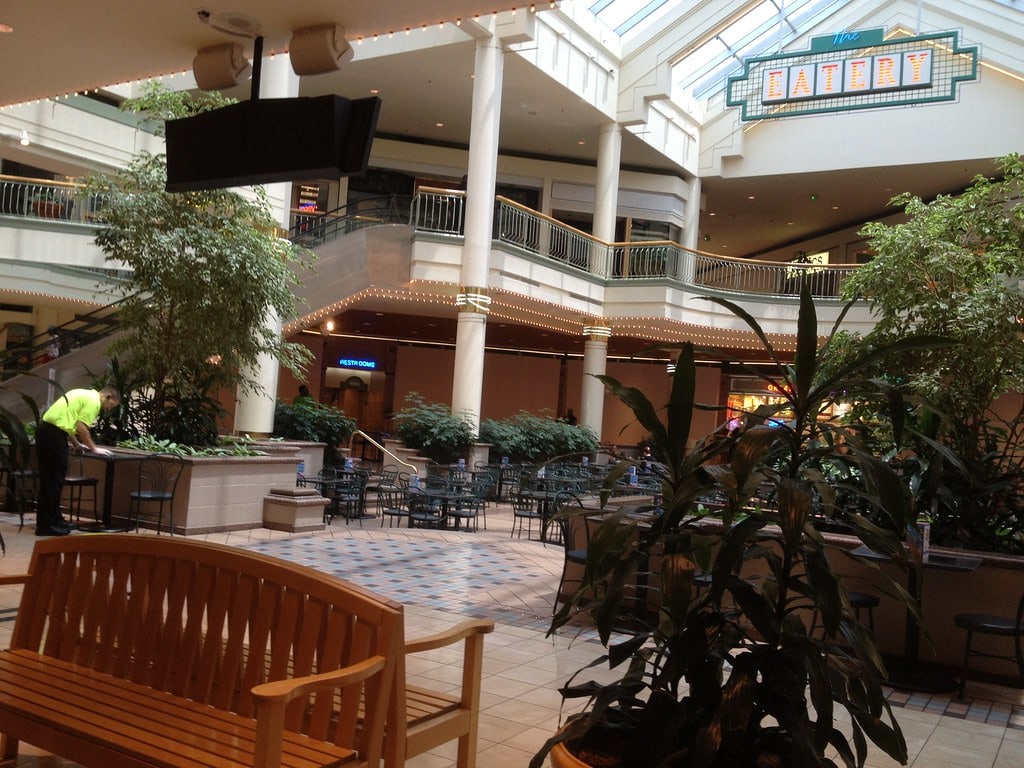
Redevelopment by Design - Long-Term Planning and Phased Rollout
The strategy dropped quietly on February 28, 2023. Gwinnett County's Board of Commissioners laid out a 20-year redevelopment roadmap for the mall site. No demolition dates.
No splashy renderings. Just a layered proposal focused on transit, housing density, and greenspace, shaped by more than two years of public input and consultant feedback.
The document spelled out intentions: connected residential blocks, new sidewalks, improved bus access, and open areas worked into the property's footprint.
The words were dry, but the subtext was clear. The old mall wasn't coming back. Future growth would work around it, replacing its empty shell with zoning overlays and incremental permitting.
The plan sets the 2040s as the long horizon, with shorter phases tied to transportation upgrades and market cycles.
Every move required coordination between departments, boards, and private stakeholders. Nothing fast-tracked. Some meetings were streamed. Others unfolded in rezoning hearings and grant submissions.
The mall, meanwhile, stayed standing.
Closeout and Construction - Asset Buybacks and New Ground
On September 17, 2024, the county bought out two final pieces: the Macy's main store and its adjacent furniture outlet.
The price was $16.5 million. Both sites had operated independently for years, separate from the 39 acres Gwinnett County acquired back in 2021. That sale closed on December 2.
Macy's corporate headquarters made the next move. On January 9, 2025, it named both Gwinnett Place locations in a list of 66 stores scheduled to shutter.
By March 23, both had gone dark. Storefronts emptied fast, and fixtures were liquidated. The entrances were shuttered by month's end.
Elsewhere, development picked up. On March 27, the Board of Commissioners approved a $3.5 million contract for the design phase of a new Gwinnett Place Transit Center.
The proposal outlined expanded rider platforms, improved vehicle bays, and on-site county offices. Funding included local contributions and nearly $20 million in federal support.
Residential construction trailed just behind. Greystar's Elan Satellite Place, a 328-unit complex positioned just east of the mall property, had begun pre-leasing in April.
County records pegged full delivery for summer 2025. That structure didn't touch the mall site itself, but it leaned on the same shift in land use, the pivot from retail square footage to high-density housing stock.
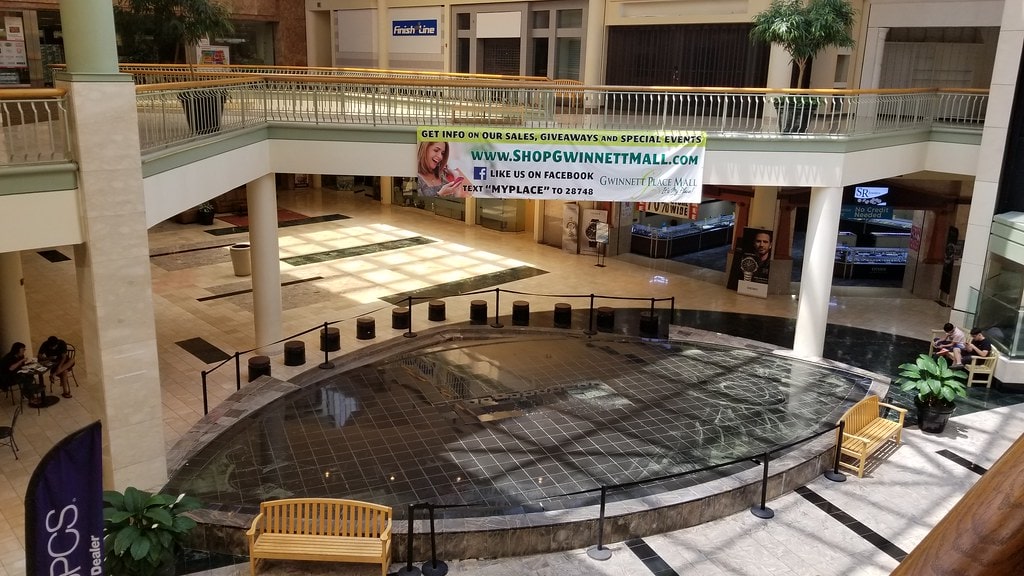
🍀

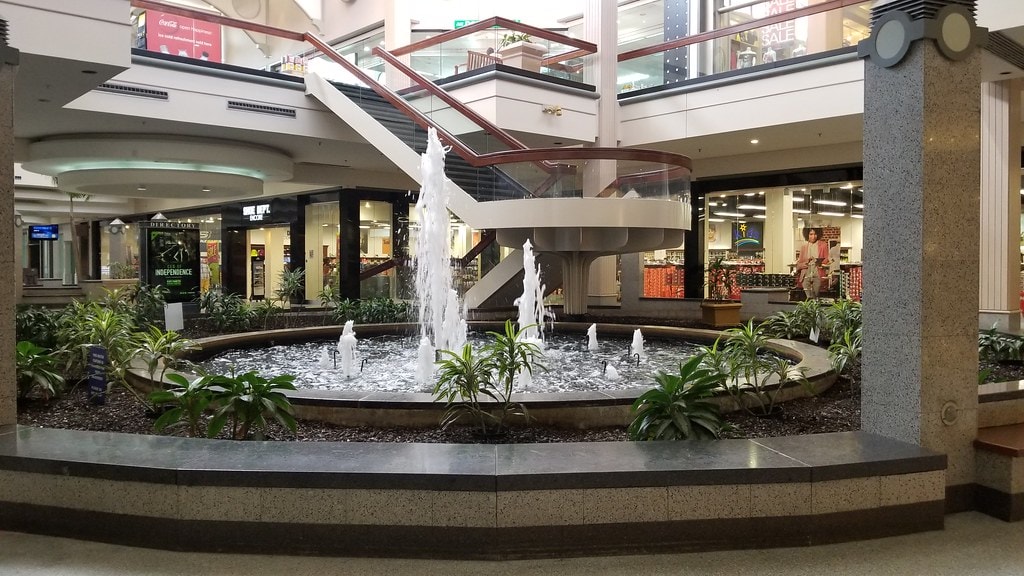
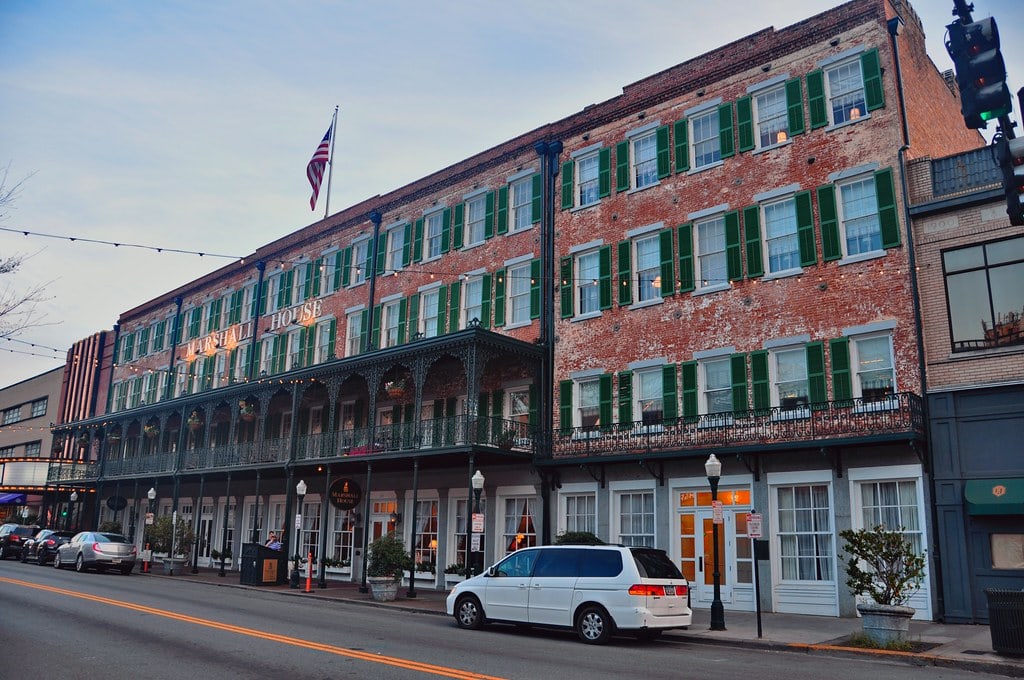
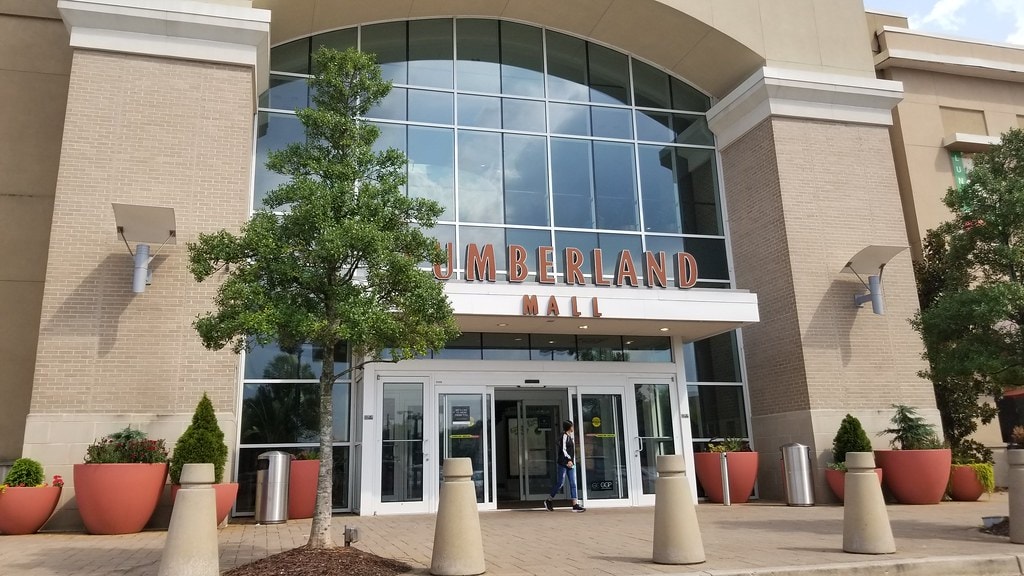
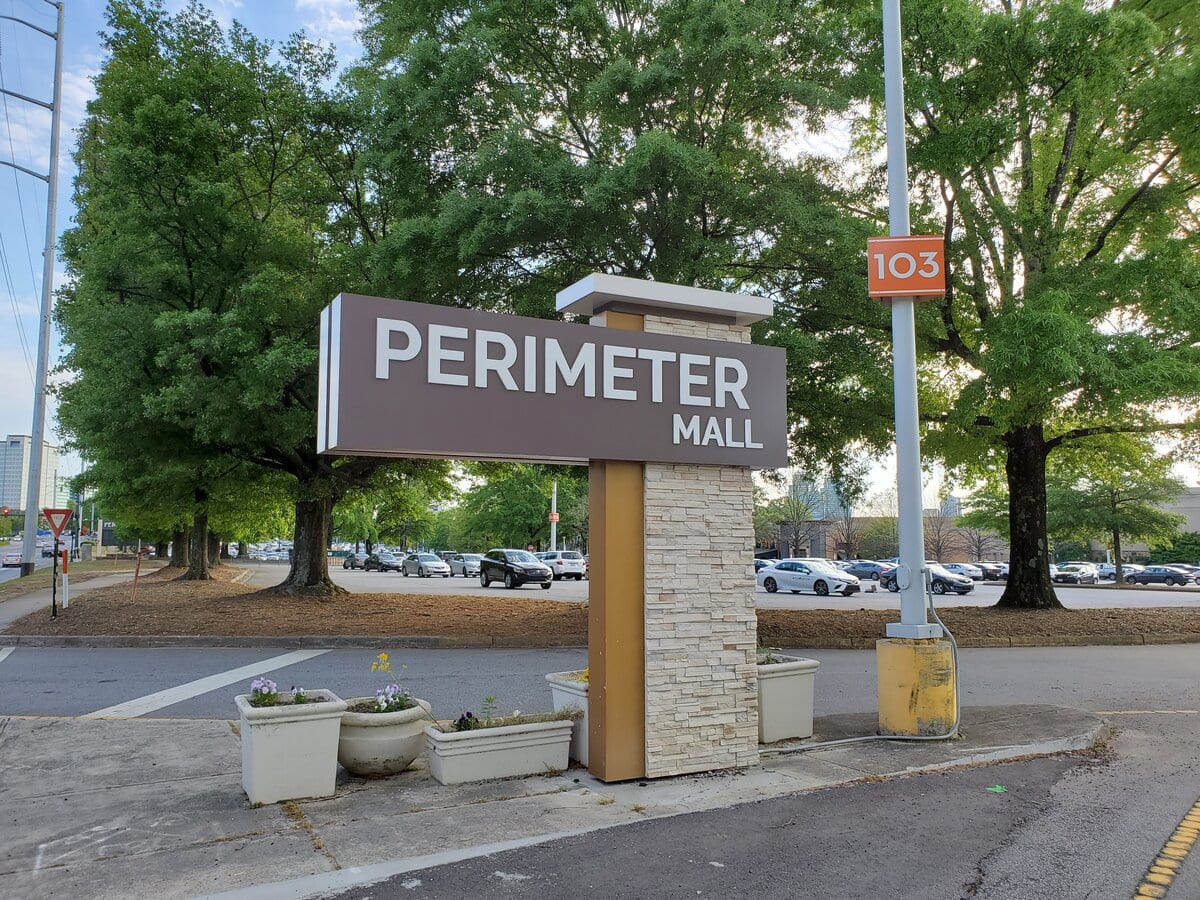
So with all that said what’s happening?
That's a good question, and one that many locals continue to ask. Mostly behind-the-scenes work: zoning adjustments, community feedback, studies. It's moving, but slowly.